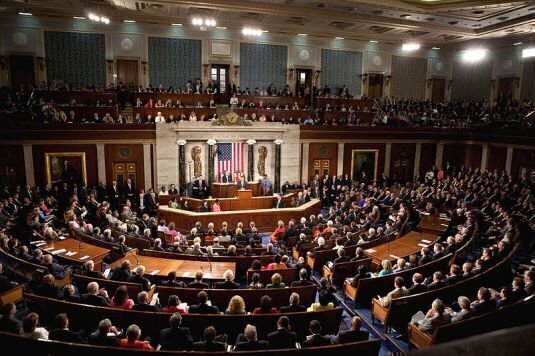Later this week, Congress will face a budget-funding deadline that could lead to a partial government shutdown starting on Saturday. So what happens if politicians can’t reach a deal?
 Back in October 2013, Democrats and Republicans fought over the implementation of parts of the Affordable Car Act and the debt ceiling. The sides couldn’t agree on a continuing resolution to fund federal government operations, and the federal government saw a 16-day shutdown as a result.
Back in October 2013, Democrats and Republicans fought over the implementation of parts of the Affordable Car Act and the debt ceiling. The sides couldn’t agree on a continuing resolution to fund federal government operations, and the federal government saw a 16-day shutdown as a result.
UPDATE: Government shutdown deal could extend Mexico wall, sanctuary city debates
About 800,000 government workers faced furloughs, and some highly visible government services weren’t unavailable during the 2013 shutdown, which was highly unpopular with much of the public.
In December 2016, Congress passed the current continuing funding resolution for federal government operations. President Obama signed that bill on December 10, which extended government funding through April 28, 2017.
Because Congress rarely passes annual funding and all related budget resolutions by October of each year, these continuing appropriations resolutions are needed to keep the government in business – and they frequently come with some controversy.
This year, the Trump administration is reportedly insisting that the continuing resolution includes significant funding for a border wall with Mexico. It may also attempt with the help of some Republicans in Congress to advocate for eliminating all or major parts of Obamacare.
Both of these acts would face resistance from congressional Democrats. And in the Senate, the legislative filibuster remains intact, meaning that eight Democrats would need to vote with 52 Republicans to move any continuing resolution forward.
Unless the Republicans take the unexpected step of killing the legislative filibuster, a stalemate could ensue if a continuing resolution to fund the government through September 2017 isn’t approved by the House and Senate.
To be sure, a lot can happen in five days, and congressional leaders could pass a short-term funding bill to keep the government open while talks continue. But if a Republican-sponsored resolution includes measures highly unpopular with Democrats, a government shutdown is a clear possibility.
Under the terms of the Antideficiency Act, only “excepted” areas in the government receive funds during a shutdown and thus stay in operation. The act dates back to 1870 and it was amended in 1982 to deal specifically with what stays open, and what stays closed, during government shutdowns caused by funding gaps.
Many functions within the government that deal with information technology fall outside of the list of “excepted” government functions. Other IT functions that deal with safety and national security will remain in place. But popular government websites would go on hiatus.
The National Park Service would likely make its websites unavailable. The Smithsonian museums could be closed as well.
National Park Service sites could be closed; visa and passport applications would go unprocessed; veterans and military benefits would be delayed; bankruptcy cases would be suspended; payments to federal jurors would be deferred; and some health research services won’t be available.
Employees who provide these services would likely go on a “shutdown furlough” where they are placed on temporary, non-duty, non-pay status. The shutdown furlough is not considered a break in service and the workers receive credits for retaining their benefits and seniority. Employees who will keep on working during the shutdown are known as “excepted” workers.
The Antideficiency Act was amended in 1982 to ensure that “excepted” areas existed in the government that still received funds during a shutdown. In addition, legal opinions from President Jimmy Carter’s era define more areas that are exempted from a shutdown caused by a funding gap.
And due to constitutional measures, Congress, the president, and the Supreme Court will be paid during the funding gap and shutdown.
Social security checks will still be issued, but this was also a point of contention in the 1995–1996 shutdown, when the government had to recall furloughed employees to handle services.
Scott Bomboy is the editor in chief of the National Constitution Center.
Other Recent Constitution Daily Stories
Government shutdown 101: Why they happen and what is closed
Discover 10 treasures from the Library of Congress
James Buchanan: How he currently trends as the worst President ever







